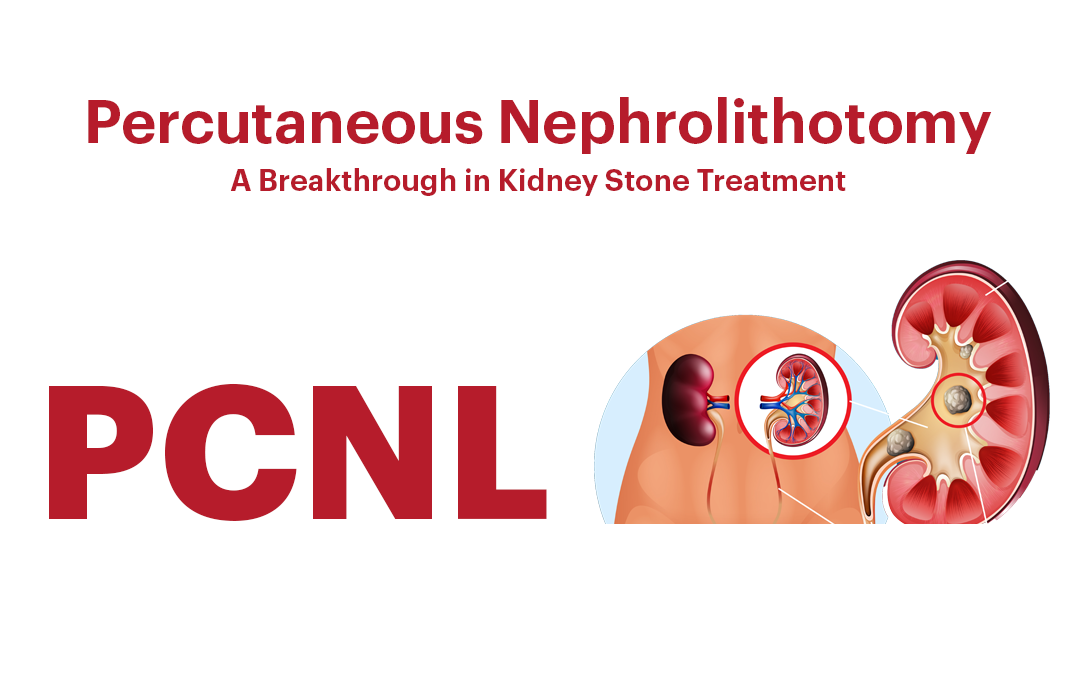

PERCUTANEOUS NEPHROLITHOTOMY (PCNL): A BREAKTHROUGH IN KIDNEY STONE TREATMENT

Kidney stones, those small, hard mineral deposits that form in the kidneys, can cause excruciating pain and discomfort. Fortunately, modern medicine offers several treatment options, one of which is Percutaneous Nephrolithotomy (PCNL). This cutting-edge procedure has revolutionized the management of kidney stones, providing patients with a highly effective and minimally invasive approach to stone removal. In this educational content, we will explore PCNL, delving into its indications, the procedure itself, recovery, potential complications, and its importance in modern urology.
Understanding Kidney Stones and the Need for PCNL
1. Kidney Stones: Kidney stones are solid crystalline structures that form in the kidneys when there is an excess of certain minerals in the urine. They can vary in size and composition and are notorious for causing intense pain when they pass through the urinary tract.
2. Indications for PCNL: PCNL is typically recommended for patients with large kidney stones or stones that are located in areas of the kidney that are difficult to access using traditional methods.
The PCNL Procedure
1. Anesthesia: PCNL is performed under general or spinal anesthesia to ensure the patient's comfort and safety during the procedure.
2. Access: The surgeon makes a small incision on the patient's back to access the kidney directly. This is typically done under guidance from imaging techniques like fluoroscopy or ultrasound.
3. Nephroscope Insertion: A nephroscope, a specialized instrument with a light source and a camera, is inserted through the incision to provide a clear view of the kidney's interior.
4. Stone Removal: Using various instruments, such as laser fiber or ultrasonic devices, the surgeon precisely breaks the kidney stone into smaller fragments. These fragments are then removed through the nephroscope.
5. Placement of a Drain: At the end of the procedure, a tube or stent may be placed to facilitate urine drainage and aid in the healing process.
Recovery and Aftercare
1. Hospital Stay: Patients typically spend a day or two in the hospital following PCNL, though the exact duration can vary based on individual factors.
2. Recovery Time: Recovery involves some pain, discomfort, and blood in the urine. Patients may be advised to limit physical activity for a few weeks. Full recovery varies, but most people can resume their normal activities within a few weeks to a couple of months.
3. Follow-up: Follow-up appointments with the urologist are essential to monitor recovery, assess stone clearance, and remove any temporary drainage tubes or stents.
Potential Complications
1. Bleeding: While PCNL is generally a safe procedure, bleeding can occur, especially in cases of complex or large stones. It is typically managed during the surgery, but occasionally, additional interventions or blood transfusions may be required.
2. Infection: Infections are rare but possible. Antibiotics are typically administered before and after the procedure to minimize this risk.
3. Injury to Surrounding Structures: There is a slight risk of injury to adjacent organs or structures during the PCNL procedure, but these are exceedingly rare.
4. Residual Stones: In some cases, not all stone fragments are successfully removed during the initial PCNL. This may require additional procedures or treatments.
The Significance of PCNL in Modern Urology
PCNL has transformed the treatment of kidney stones by providing a minimally invasive alternative to open surgery. In the past, large or complex kidney stones often required open surgical procedures, which had longer recovery times and increased risks. PCNL, with its small incisions and advanced technology, has significantly reduced these risks and improved patient outcomes.
Furthermore, PCNL allows urologists to target stones in challenging locations within the kidney, offering a more effective solution for patients.
Conclusion:
Percutaneous Nephrolithotomy (PCNL) is a groundbreaking procedure that has reshaped the landscape of kidney stone treatment. With its minimally invasive approach, high success rate, and reduced recovery times, PCNL stands as a testament to the ever-advancing field of urology.
Patients suffering from large or complex kidney stones now have a powerful and effective solution, promising relief from the pain and discomfort caused by these troublesome mineral deposits. Consulting with a urologist can help patients determine if PCNL is the right choice for their unique circumstances, considering the stone's size, location, and the patient's overall health and preferences.














